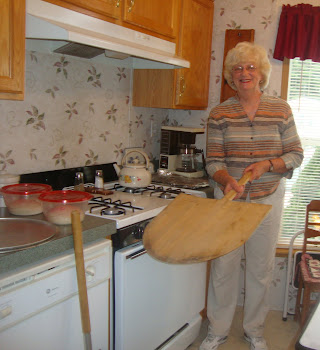I have been trying milk kefir to leaven my pizza dough. First I added the milk kefir directly to the other ingredients. Now I am trying a poolish with milk kefir. A classic poolish is the same amount of water (or milk kefir in these experiments) and flour added together until the poolish bubbles to a certain point. Usually a poolish is left at room temperatures until the poolish comes to a point of what is called the break point or the bubbles start to recede. A poolish will mature at different room temperatures at different times, all depending if you use a commercial yeast such as IDY, ADY, natural “wild yeast”, or even purchased wild yeast strains. I had been experimenting Ischia starter before in making a pizza, also with a poolish. I will explain about the Ischia starter in future posts.
So far using the milk kefir does leaven the dough, and although I did get some decent results in making a pizza and leavening the pizza dough, but I am still experimenting in seeing if I can get better results. Understanding how to use milk kefir, in my opinion, is more difficult than using other kinds of starters. The poolish using the milk kefir starter doesn’t behave like other methods in making a poolish. Right now I just have to watch the poolish visually to see when I think it is ready to be incorporated into the final dough. Even after incorporating the milk kefir poolish into the final dough can be tricky to know when the final dough is ready to be baked into a pizza. I have a pH meter, that I had used at one time in a Fresh Salsa market stand I owned. I am now taking the pH values to see if they can tell me when the dough might be ready to bake a pizza. So far I can’t really say, this is a big help, but will continue to take the pH numbers at various times to see if they can help.
A milk kefir pizza is good, in my opinion. It has the characteristics of a naturally leavened dough. I will follow up with posts on milk kefir in pizza dough, as I experiment more.
Norma
This is a blog about my learning knowledge to make pizza. I have been helped by many people on my journey
Welcome...
There are so many variables that go into making a PIZZA. The hydration of the dough, flour, yeast and many more.. Amounts of any kind of yeast in a pizza can make a big difference. Most recipes posted on the web, use too much yeast in their recipes. What I have found out so far, is either bulk fermenting the dough or cold fermenting the dough will give a better flavor in the crust. I am still experimenting to find different flavors in the crust of pies. In my opinion pizza is all about the best flavor you can achieve in a crust. I still am on the journey about flavors in the crust. Even differences in temperatures in you home or times of the year can influence how much yeast to use. If you want a pizza to develop flavors in the crust, there are many ways to go about achieving this.
Adventure in Pizza Making
There are many ways to go about trying to make any kind of pizzas you want to create. PIZZA making is fun and also you get to eat your finished product. I learned to make all my pizza on http://www.pizzamaking.com/forum/index.php
If you look on pizzamaking.com you can see all the beautiful creations of pizzas members make on this site. Members and moderators help members and guests achieve almost any kind of pizzas they want to create. Since joining this site, my pizza making skills have gone from non-existent to something much better. I invite you to take a look at this site.
Total Pageviews
Subscribe to:
Post Comments (Atom)












No comments:
Post a Comment